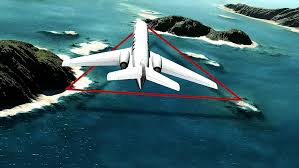Ports of Pakistan: Strategic Gateways to Trade and Growth

Pakistan, with its prime geographical location along the Arabian Sea, plays a significant role in regional and international maritime trade. The country’s coastline stretches over 1,000 kilometers, providing ample opportunity for the development of seaports. Over the decades, Pakistan has developed a number of strategically important ports that serve as crucial links for imports, exports, energy supplies, and naval defense. These ports not only support the country’s economy but also enhance its geopolitical significance in South Asia and beyond.
In this blog, we will explore the major ports of Pakistan, their importance, infrastructure, and future prospects.
1. Karachi Port
Location: Karachi, Sindh
Established: 1887
Authority: Karachi Port Trust (KPT)
Karachi Port is Pakistan’s oldest and busiest seaport, located in the southern part of Karachi. It handles approximately 60% of the nation’s cargo, making it the backbone of Pakistan’s maritime trade. Strategically situated between the Middle East and the Far East, it serves as a major hub for commercial shipping lines.
Key Features:
-
Two main wharves: East Wharf and West Wharf
-
Around 30 berths for container, bulk, and general cargo
-
Annual cargo handling capacity exceeds 60 million tons
-
Connectivity with railways and highways for inland distribution
Economic Importance:
Karachi Port contributes significantly to the national economy by facilitating the import of essential commodities like oil, machinery, chemicals, and food, while enabling the export of textiles, rice, seafood, and more.
Challenges:
Despite its prominence, Karachi Port faces congestion and infrastructure limitations, which have led to the development of alternative ports like Port Qasim and Gwadar.
2. Port Qasim
Location: Near Karachi, Sindh
Established: 1973
Authority: Port Qasim Authority (PQA)
Port Qasim is Pakistan’s second-busiest seaport and was developed to ease pressure on Karachi Port. Located about 35 kilometers east of Karachi, it is built along the Indus River delta and has deep-draft navigation, which makes it ideal for large vessels.
Key Features:
-
Equipped with specialized terminals for containers, LNG, coal, and cement
-
Industrial zones around the port including steel mills and power plants
-
Annual cargo handling capacity: over 50 million tons
-
Connected via national highways and a dedicated railway line
Economic Impact:
Port Qasim is a key facilitator for industrial development in Pakistan. It plays a major role in importing liquefied natural gas (LNG), which is critical for the country’s energy sector.
Expansion Plans:
There are plans to further expand terminals and industrial zones to boost cargo capacity and create employment opportunities.
3. Gwadar Port
Location: Gwadar, Balochistan
Developed by: China (under China-Pakistan Economic Corridor – CPEC)
Authority: Gwadar Port Authority (GPA)
Gwadar Port is the newest and perhaps the most strategically significant port in Pakistan. Located near the Strait of Hormuz, through which a significant percentage of the world’s oil passes, Gwadar has the potential to become a regional trade and energy hub.
Key Features:
-
Deepest seaport in Pakistan with a depth of over 18 meters
-
Capable of handling large oil tankers and cargo ships
-
Includes a Free Trade Zone (FTZ) and Special Economic Zone (SEZ)
-
Operated by China Overseas Port Holding Company (COPHC)
Strategic Importance:
-
Key element of China’s Belt and Road Initiative (BRI)
-
Offers China access to the Arabian Sea, bypassing the Strait of Malacca
-
Can serve Central Asian Republics and landlocked Afghanistan
Challenges:
While Gwadar has immense potential, it still faces logistical, security, and infrastructure hurdles. Development of road and rail connectivity to the rest of Pakistan remains a work in progress.
4. Ormara Port
Location: Ormara, Balochistan
Function: Primarily a naval base (Jinnah Naval Base), with limited commercial use
Ormara Port is primarily a military facility but also holds strategic maritime importance due to its location between Gwadar and Karachi. While not a major commercial port yet, future development could include expanded logistics and support services.
5. Pasni Port
Location: Pasni, Balochistan
Function: Medium-sized fishing port with limited cargo handling capacity
Pasni is a smaller port mainly used for fisheries and coastal trade. It has potential for development into a regional maritime service port, especially with increased interest in Balochistan’s coastline.
6. Keti Bandar Port (Proposed)
Keti Bandar is a proposed deep-sea port located in Thatta district of Sindh. It is expected to play a key role in future trade strategies and may be used for coal transportation linked with the Thar coal project.
Maritime Trade and the National Economy
The seaports of Pakistan are lifelines for its economy. Nearly 95% of Pakistan’s international trade is conducted through sea routes. With global trade increasing and the need for regional integration growing stronger, Pakistan’s ports can become major conduits for logistics, energy transportation, and regional cooperation.
Key Contributions:
-
Employment generation across port cities
-
Growth of ancillary industries like shipping, warehousing, and logistics
-
Strengthening trade ties with China, Middle Eastern countries, and Central Asia
Future Outlook
Pakistan’s government, along with foreign investors, especially China, has shown keen interest in upgrading the country’s port infrastructure. Key initiatives include:
-
Enhancing rail and road connectivity from Gwadar to Central Asia and Western China
-
Expanding Port Qasim’s industrial and terminal facilities
-
Digitizing port operations to improve efficiency
-
Developing integrated logistics zones and dry ports
Despite challenges like political instability, lack of infrastructure, and regional security concerns, the potential for Pakistan’s maritime sector remains robust.
Conclusion
The ports of Pakistan are more than just cargo handling points — they are dynamic economic and strategic assets. From the busy terminals of Karachi and Port Qasim to the ambitious vision of Gwadar, these maritime gateways are crucial for trade, development, and regional connectivity. As Pakistan invests in modernizing and expanding its port infrastructure, it stands to gain significantly in terms of economic growth, regional influence, and global trade participation.
With proper planning, security, and international collaboration, Pakistan’s ports could transform the country into a powerful maritime nation in the coming decades.






Leave a Comment